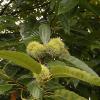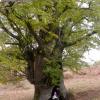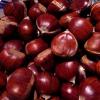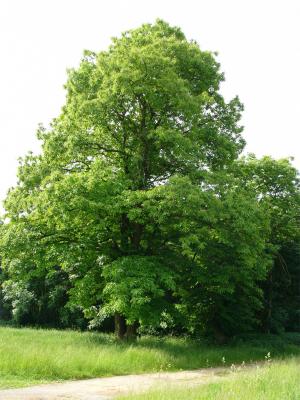Il castagno europeo (Castanea sativa, Miller), in Italia più comunemente chiamato castagno, è un albero a foglie caduce appartenente alla famiglia delle Fagaceae.
Il Castagno è originario dell'Europa meridionale, Nord Africa e Asia occidentale. I castagneti da frutto sono ormai molto ridotti (in seguito al mal dell'inchiostro e al cancro) in Italia, anche se in questi ultimi anni si sta assistendo ad un tentativo di recupero non solo ai fini produttivi. Le regioni in Italia in cui la coltura del castagno da frutto assume maggior importanza sono la Campania, la Sicilia, il Lazio, il Piemonte e la Toscana. In Italia è presente in molte aree montane. In provincia di Salerno sono tante le zone adibite a castagneto, dall'aria montana della Costiera amalfitana (Scala, Ravello, Tramonti) a quella del Cilento.
Il castagno è un albero che può raggiungere anche l'altezza di 25 metri, ha chioma espansa, rotondeggiante o globosa. Il tronco nei vecchi esemplari diventa possente raggiungendo 10 e più metri di circonferenza. Le castagne sono ricche di amido e in molte zone montane d'Italia hanno rappresentato, fino agli anni '50, la principale fonte alimentare. Nel Medioevo hanno costituito la principale base alimentare di molte popolazioni.
Ad ottobre a Scala, il comune più antico della Costiera amalfitana, si organizza la "Sagra della Castagna", a testimonianza di questo prodotto tipico che qui ha origine da secoli.

Chestnut
Chestnut (Castanea sativa), commonly known in Italy as “castagno”, is a tree with boldly toothed leaves belonging to the family Fagaceae.
It is originally native of southeastern Europe. North America and West Asia. The number of fruit castanea sativa are drastically decreased in Italy after some disease, even if in the last few years it has been made an effort to recover this trees. The cultivation of chestnuts is particular important in regions such as Campania, Sicily, Lazio, Piemonte and Tuscany. In the province of Salerno there are many areas with chestnuts, from the mountain area of the Amalfi Coast (Scala, Ravello, Tramonti) to the Cilento’s area.
Chestnut can reach a height of 25 meters with a trunk even 10 meters in diameter for the oldest specimen. The foliage is expanded and roundish. The sweet chestnuts are rich in starch and in most of the mountain areas in Italy it was the main source of food until the ‘50s. In October one of the most ancient villages of the Amalfi Coast, Scala, organize the “Sagra della Castagna”, a special festival of the sweet chestnut.





